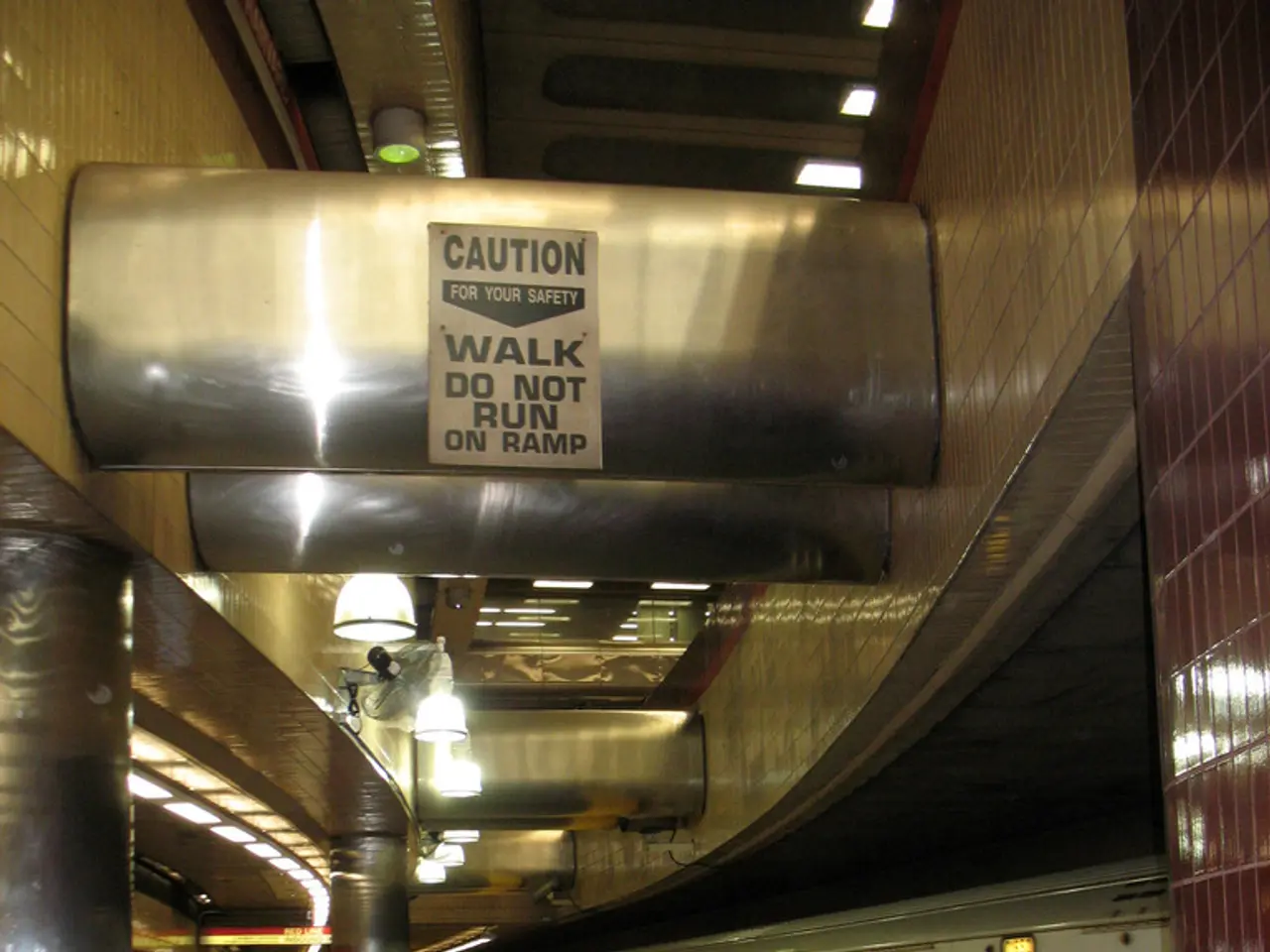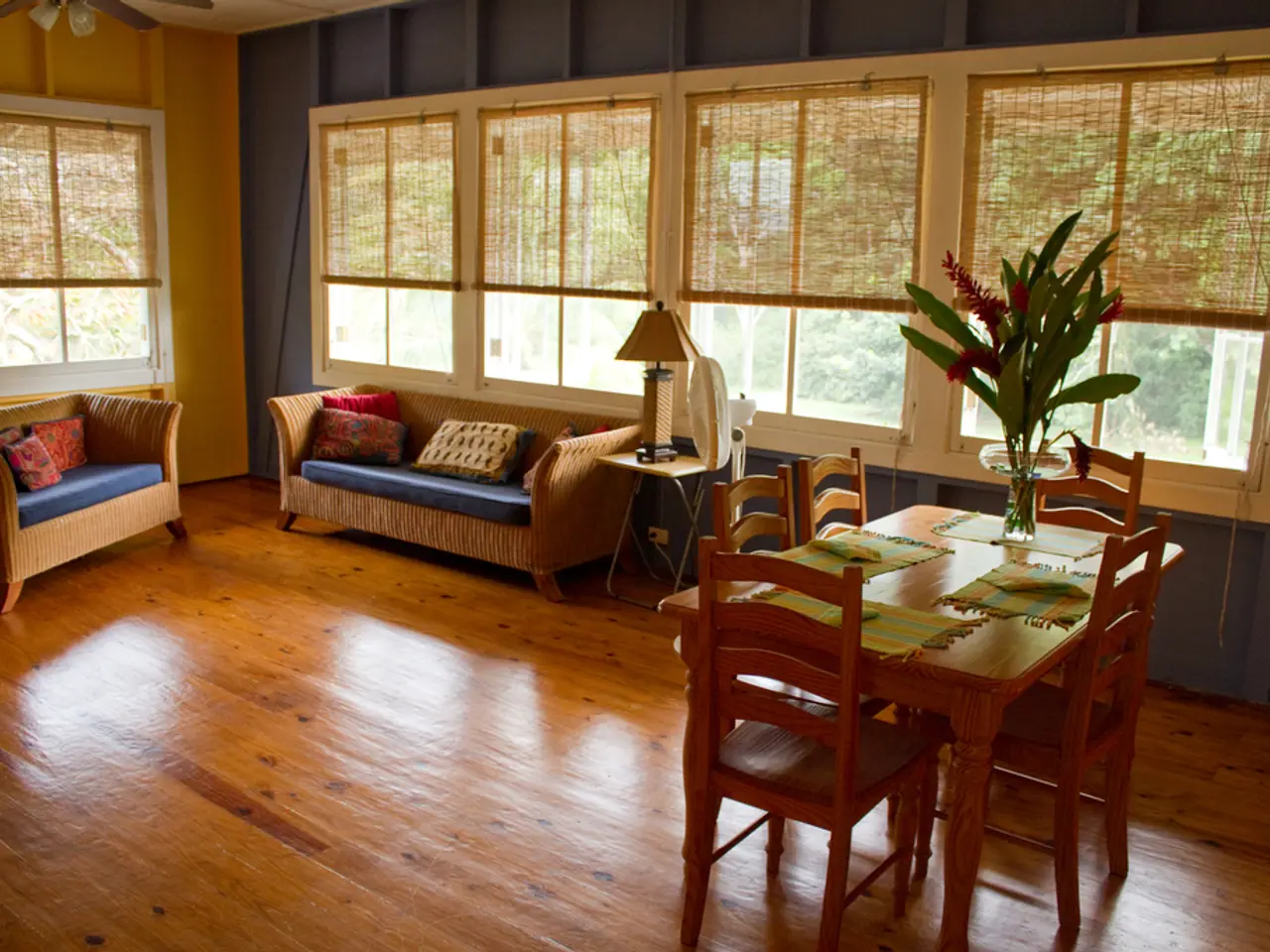Struggles in the real estate sector, marked by outdated projects and scarce new development opportunities.
The 'Fly to Quality' phenomenon continues in Argentina, albeit at a more moderate pace compared to pre-pandemic times. This trend, which involves relocation towards more modern, efficient, and sustainable spaces, remains relevant in the current market climate [1]. However, the market is experiencing a more cautious approach, with the initial occupancy of new developments dropping significantly from 86% (2019-2020) to 19% (2023-2024) [2].
Despite this, activity in the market remains dynamic, with an increase in the volume of square meters transacted, reflecting a positive net absorption [2]. The CBRE Argentina report suggests that without new projects in the short term, the market could face a shortage scenario due to demand prioritizing higher standards [6].
The report notes that 35% of Class A offices are over 15 years old, many with maintenance deficiencies, which limits their ability to compete with new corporate standards [5]. This structural disconnection is evident, with companies maintaining interest in quality spaces but facing obstacles in meeting this need due to the lack of new developments and aging of the existing stock [7].
The key challenges for Class A offices are navigating tight supply amid rising and evolving tenant demands for quality, flexibility, and sustainability, which amplify competition and require ongoing upgrades [1][3]. Intense competition for prime space is evident, particularly among large occupiers, as demand remains strong at the top tier (trophy and Class A) [1].
Tenant requirements are focusing on quality and amenities, such as walkable amenities, transit proximity, flexible office layouts, strong ESG profiles, and certifications like LEED or WELL [1][3]. This selective demand widens the gap between top-tier Class A and lower-tier office spaces, putting pressure on Class A owners to continuously upgrade and maintain high standards [1][3].
Lease flexibility and evolving models are also contributing to the challenges faced by Class A landlords. Tenants now expect shorter leases, adaptable floor plans, and usage-based or dynamic pricing tied to actual occupancy [3]. This shift requires landlords to adjust traditional leasing approaches.
Competition from lower-tier (Class B and C) stock struggles to meet these demands, causing these assets to underperform and creating a bifurcated market. This indirectly impacts Class A by highlighting the premium tenants place on quality and sustainability [1][3].
Regarding the relationship between available supply and new demand requirements, the limited available supply of premium Class A space contrasts with ongoing selective demand growth, creating a supply-demand imbalance [1][3]. New demand requirements emphasize quality, sustainability, and flexibility, raising the bar for what qualifies as acceptable Class A space and thus limiting the effective supply further [1][3].
Argentina's inventory growth has slowed compared to other Latin American cities, exacerbating the disconnect between supply and demand [8]. Opportunity zones have relatively young inventory and high vacancy, offering potential for renegotiating prices or conditions [8].
Karina Longo, Research Manager at CBRE Argentina, states that the scarcity of new projects in the short term leads to reflection on where demand prioritizing quality, technology, sustainability, and well-being will be installed, and how the current inventory responds to these needs [9]. Macroeconomic uncertainty and the evolution of work modalities influence the more cautious market [9].
The opportunity for developers and owners lies in adapting the existing stock and enhancing spaces with room for improvement [9]. The CBRE Argentina report classifies office submarkets based on inventory age and vacancy rate, identifying four categories: opportunity zones, high-demand zones, and declining zones [8]. This suggests that age remains a relevant factor, but not in a linear way: beyond a certain threshold, the differential in quality and price is attenuated [8].
In summary, the key challenges for Class A offices are navigating tight supply amid rising and evolving tenant demands for quality, flexibility, and sustainability, which amplify competition and require ongoing upgrades. The limited supply of space meeting these new high standards fuels intense demand, impacting pricing and leasing strategies across the Class A segment [1][3].
Sources: [1] CBRE Argentina Report (2023) [2] CBRE Argentina Report (2022) [3] Longo, K. (2023) Interview with CBRE Argentina Research Manager [4] CBRE Argentina Report (2021) [5] CBRE Argentina Report (2020) [6] CBRE Argentina Report (2024) [7] Longo, K. (2024) Presentation at Real Estate Conference [8] Longo, K. (2023) Presentation at Real Estate Conference [9] Longo, K. (2024) Interview with Latin American Real Estate Magazine
In the context of the current market climate, there is an increased interest among companies in quality and sustainable Class A offices with modern amenities, such as walkable amenities, flexible office layouts, and strong environmental, social, and governance (ESG) profiles. This selective demand is putting pressure on Class A office owners to continuously upgrade and maintain high standards to meet the evolving tenant requirements.
On the other hand, the CBRE Argentina report suggests that without new Class A projects in the short term, the market could face a shortage scenario due to growing demand prioritizing quality, technology, sustainability, and well-being. The scarcity of available premium Class A space and the ongoing demand growth create a supply-demand imbalance, raising the bar for acceptable Class A space and fueling intense demand, impacting pricing and leasing strategies across the Class A segment.








